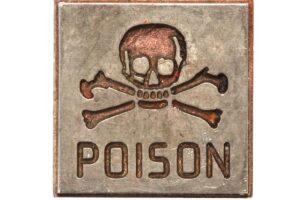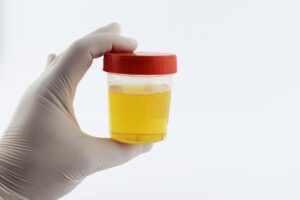What are Mycotoxins?
Mycotoxins are toxic compounds produced by certain types of fungi, commonly found in a variety of foods, feedstocks, and warm, wet environments. They are known to pose significant health risks to humans and animals when ingested, inhaled, or absorbed through the skin. Most people think of mold when they think of mycotoxins. Mold is a type of fungus, one of many types, that can create mycotoxins. We will discuss how to get a mycotoxin urine test at home and what warrants testing.
Mycotoxins can have a profound impact on health, ranging from acute poisoning to long-term chronic illnesses. I will review the 10 warning signs of mold toxicity, types of lab testing and how to treat mycotoxin illness. Short-term exposure can lead to symptoms like nausea, vomiting, and abdominal pain, while chronic exposure may contribute to immune suppression, liver damage, and an increased risk of cancer. Particularly concerning is the potential for mycotoxins to cause neurological damage and disrupt endocrine function, making their presence in food and environment a significant health concern. [1]
Affiliate disclosure: Some of the links in this post are affiliate links, meaning that if you click through and make a purchase, I will receive a small commission at no cost to you.
Common Mycotoxins & Their Food Sources
Some of the most well-known mycotoxins include Aflatoxins, Ochratoxin A, Trichothecenes, Fumonisins, and Zearalenone. Each has its own health effects and can be found in a variety of places. [2]
Aflatoxins are perhaps the most notorious, primarily produced by Aspergillus flavus and Aspergillus parasiticus fungi. They are frequently found in improperly stored staple commodities such as peanuts, corn, cottonseed, and tree nuts. Aflatoxins are known for their potent carcinogenic (cancer-causing) properties, particularly affecting the liver. Their presence in food and feed is a significant concern globally.
Ochratoxin A, predominantly produced by Aspergillus and Penicillium species, is another common mycotoxin. It is often detected in cereals, coffee, dried fruit, and some types of wine and beer. Ochratoxin A is known for its nephrotoxicity (toxicity in the kidneys) and carcinogenic potential, particularly posing risks to the kidneys, the immune and neurological systems.
Trichothecenes, produced by various species of Fusarium fungi, are most commonly found in moldy grains and cereals such as wheat, barley, and oats. These toxins can cause severe health effects such as vomiting, diarrhea, and in severe cases, immune suppression. Their presence is often associated with damp and poor storage conditions.
Fumonisins, primarily produced by Fusarium verticillioides and Fusarium proliferatum, are frequently found in corn and corn-based products. They have been linked to diseases in livestock and are of particular concern due to their potential to cause liver and kidney damage in humans.
Lastly, Zearalenone, also produced by Fusarium species, is known to contaminate crops like corn, barley, oats, wheat, rice, and sorghum. It mimics estrogen and can cause reproductive disorders in animals. Its impact on human health, particularly in terms of hormonal imbalances, is an area of ongoing research.
Each of these mycotoxins represents a significant challenge to food safety and public health, necessitating rigorous monitoring and control in food production and storage practices to minimize exposure and risk. Mycotoxin testing is of the utmost importance in both people and our foods to mitigate the potential for grave health conditions.
 Tips for Identifying and Avoiding Moldy Foods
Tips for Identifying and Avoiding Moldy Foods
Identifying and avoiding moldy foods is crucial for reducing the risk of mycotoxin exposure. It starts with being vigilant while shopping; always inspect grains, nuts, dried fruits, and other susceptible foods for any signs of mold or unusual odors, which often indicate spoilage. When it comes to dairy products, especially cheeses, look for any discoloration or a slimy texture, as these can be indicators of mold growth.
In your pantry and refrigerator, maintain optimal storage conditions — keep humidity low and store foods in airtight containers to prevent moisture buildup. Regularly check stored foods for any signs of mold and discard anything that looks or smells off. Furthermore, avoid purchasing bulk items from open bins, as these can be exposed to air and moisture, increasing the risk of mold contamination. By taking these proactive steps, you can significantly lower your chances of consuming mold-contaminated foods.
10 Warning Signs of Mold Toxicity
- Respiratory Issues: Persistent coughing, wheezing, sinus congestion, and difficulty breathing, often exacerbated in moldy environments.
- Skin Irritations: Unexplained rashes, itching, hives, or redness of the skin, which may worsen upon direct contact with moldy substances.
- Eye Irritations: Red, itchy, or watery eyes, often accompanied by a feeling of dryness or irritation that resembles an allergic reaction.
- Neurological Symptoms: Frequent headaches, dizziness, memory problems, and difficulty concentrating or experiencing brain fog.
- Fatigue: Chronic, unexplained fatigue that doesn't improve with rest, often more pronounced in mold-infested environments.
- Digestive Issues: Nausea, vomiting, diarrhea, or abdominal pain without any clear cause, which can sometimes mimic food poisoning.
- Mood Changes: Sudden mood swings, irritability, depression, or anxiety, which may seem unconnected to any specific life event.
- Allergic Reactions: Heightened sensitivity or allergic reactions, such as sneezing or a runny nose, especially in mold-prone areas.
- Joint Pain and Muscle Aches: Unexplained muscle cramps, joint pain, or aches that are not associated with physical exertion or known conditions.
- Weakened Immune System: Increased susceptibility to infections, taking longer to recover from illnesses, or having frequent colds and flu.
Short and Long-Term Health Implications
The health implications of mycotoxin exposure can be both immediate and long-term, varying in severity based on the type of mycotoxin, level of exposure, and individual susceptibility. Mycotoxin testing and subsequent treatment at the first sign of illness is imperative to curb possible negative effects.
Short-term Health Implications: Acute exposure to mycotoxins often results in immediate and noticeable symptoms. The most common are gastrointestinal disturbances, including nausea, vomiting, abdominal pain, and diarrhea. [3] In some cases, acute exposure can lead to more severe symptoms like acute liver toxicity, especially with high levels of aflatoxins. Respiratory symptoms, such as wheezing, coughing, and difficulty breathing, can occur, particularly in environments with moldy air. Neurological symptoms, including headaches, dizziness, and even acute mental and mood changes, have been reported in some cases of high-level exposure. In extreme scenarios, particularly with high doses of potent mycotoxins, acute poisoning can be life-threatening.
Long-term Health Implications: Chronic exposure to mycotoxins poses a more insidious threat, often leading to long-term health issues. The most significant of these is an increased risk of cancer, particularly liver cancer associated with long-term aflatoxin exposure. Mycotoxins like Ochratoxin A are known for their nephrotoxic effects (toxic to the kidneys), potentially leading to chronic kidney diseases. Chronic exposure can also suppress the immune system, making individuals more susceptible to infections and reducing the efficacy of the immune response. There are concerns about the potential hormonal and reproductive effects, especially in the case of mycotoxins like Zearalenone, which can mimic estrogen. Neurological impacts over the long term, including cognitive impairments, chronic headaches, and increased risk of neurodegenerative diseases, have been suggested in some studies. Additionally, there's evidence that chronic mycotoxin exposure can exacerbate pre-existing conditions like asthma or allergic reactions.
Overall, the health implications of mycotoxin exposure underscore the importance of monitoring and minimizing their presence in foods and environments. It's also crucial for individuals, particularly those with pre-existing health conditions, to be aware of these risks and seek medical attention if mycotoxin exposure is suspected.
Mycotoxin Urine Testing at Home
Functional lab tests for mycotoxins are specialized diagnostic tools used to detect the presence and levels of these toxins in the human body. These tests typically analyze urine, blood, or tissue samples for specific mycotoxins. Urine testing is the most common, offering a non-invasive method to detect a wide range of mycotoxins and their metabolites, indicating recent or ongoing exposure. You can complete mycotoxin urine testing at home.
Blood tests can be used to detect certain mycotoxins directly or to measure immune responses to mycotoxins, such as specific antibodies. Advanced laboratory techniques like mass spectrometry and immunoassays are employed in these tests to ensure sensitivity and specificity. These functional lab tests are crucial in clinical settings for diagnosing mycotoxin exposure, particularly in patients with symptoms suggestive of mold-related illnesses. They also play a vital role in research to understand the epidemiology and health impacts of mycotoxins. It’s important to note that these tests should be interpreted by healthcare professionals, considering the entire clinical picture, as mycotoxin exposure and its health effects can be complex and multifaceted.
Here at Wellness Refresh, Joanna provides a comprehensive and integrative approach to Mycotoxin treatments. View her schedule to get started.
Treating Mycotoxins
First and foremost, getting away from the source of mold is step number one. If you haven't removed yourself and the source of mycotoxins, you will continue fighting a losing battle. Mold remediation is not for the faint of heart, call the professionals. Otherwise, you risk releasing MORE mold and mycotoxins into the air and ultimately into your system. Find a professional that has one or more of these accreditations: BBEC (Building Biology Environmental Consultant), ACAC (American Council for Accredited Certification), and IICRC (Institute of Inspection, Cleaning, and Restoration Certification). [4]
There are certain supplements you will want to avoid as they can exacerbate mycotoxin illness. According to Dr. Jill Crista, an expert on mycotoxins, supplements such as saccharomyces boulardii, nutritional yeast, medicinal mushrooms, aspergillus-activated brands, some Vitamin B, red yeast rice and bee propolis all have the potential to exacerbate mycotoxin illness. [4] Additionally, there are certain antibiotics that are actually considered mycotoxins. Being aware of all of the mycotoxin culprits are necessary in arming yourself against a mycotoxin comeback.
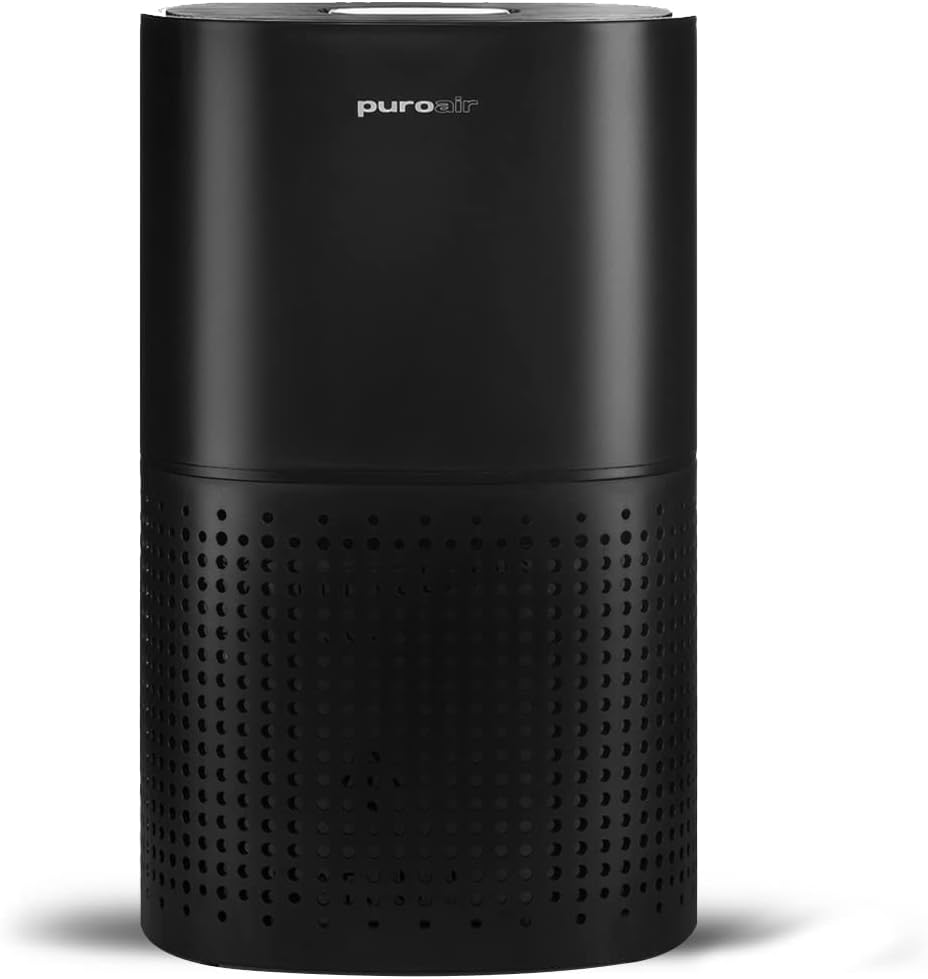
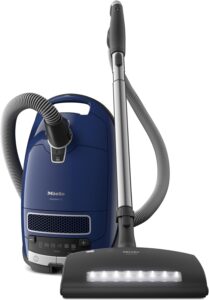
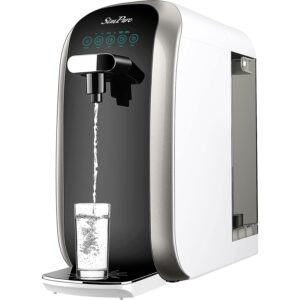

A diet rich in antioxidants, vitamins, and minerals supports the body's natural detoxification processes and strengthens the immune system, providing resilience against the harmful effects of mycotoxins. In essence, ensuring the purity of air, water, and food is not just a preventative measure but a cornerstone in the holistic treatment approach for mycotoxin-related illnesses.
In mycotoxin therapy, the use of binders is a key strategy. These substances, such as activated charcoal, bentonite clay, and certain types of fibers, work by binding to the mycotoxins in the gastrointestinal tract, preventing their absorption and facilitating their excretion from the body. This approach is widely recognized for its effectiveness in reducing the toxic load and alleviating symptoms associated with mycotoxin exposure.
Did you know that mycotoxins and other toxic compounds can hide in your fat cells?! Yep, true not-so-fun-fact. This is another reason binders are a great resource. Lasso on to those suckers and get them out of your body!
Bile movers, such as bitter greens (i.e. kale, endives, dandelion greens, etc.) or bile salts aid in moving the mycotoxins out of the body through the stool. [4] If you have a gallbladder condition, extra caution should be taken here.
Some additional supplements to consider in the fight against mycotoxin illness include:
1.Quercetin: A natural flavonoid that has anti-inflammatory and antioxidant properties. It can help reduce inflammation caused by mycotoxins and stabilize mast cells to reduce allergic reactions.
2.Milk Thistle: Known for its liver-protective effects, milk thistle supports liver function and detoxification, aiding in the processing and elimination of mycotoxins.
3.Turmeric (Curcumin): With its potent anti-inflammatory properties, turmeric helps in reducing the inflammatory response induced by mycotoxin exposure.
4. DHA (Docosahexaenoic Acid): An omega-3 fatty acid that supports brain health and can help mitigate neurotoxic effects associated with certain mycotoxins. Those who have fish allergies should stay clear of this one.
5. Alpha-Lipoic Acid: This antioxidant aids in cellular repair and detoxification, and can help restore the function of damaged cells due to mycotoxin exposure.
6. Glutathione: Often referred to as the body's ‘master antioxidant,' glutathione plays a critical role in detoxifying mycotoxins and protecting cells from oxidative stress.
7. Melatonin: Besides regulating sleep, melatonin has antioxidant properties and can support the immune system, which may be compromised due to mycotoxin exposure.
8. Coenzyme Q10 (CoQ10): This antioxidant supports mitochondrial health and energy production, which can be beneficial in recovering from the fatigue often associated with mycotoxin illness.
9. Antifungals: Pau D'Arco, Holy Basil, Olive Leaf, Old Man's Beard (Clematis Vitalba), Thyme, Oregano Oil. These come in supplement form. I advise against taking essential oils internally.
Each of these supplements contributes in unique ways to combat the effects of mycotoxins, but it's important to consult with a healthcare provider before starting any new supplement regimen, particularly in cases of mycotoxin exposure. Here at Wellness Refresh, we have our online pharmacy of medical-grade supplements to arm you with the best quality supplements available to fight mycotoxins.
A wonderful way to rid your body of toxins is through your sweat. Infrared sauna therapy is increasingly recognized as an effective detoxification tool, particularly in the context of mycotoxin exposure. The deep penetrating heat of an infrared sauna helps to stimulate sweat glands, facilitating the elimination of toxins, including mycotoxins, through sweat. This process not only aids in removing toxins from the body but also promotes improved circulation and supports the body's natural detoxification systems. The gentle, soothing nature of infrared heat makes it a suitable option for individuals seeking a non-invasive and relaxing detox method. Regular sessions in an infrared sauna can complement other detoxification strategies, contributing to an overall improvement in health and well-being.
Sunlighten is well-known for their incredible variety of saunas at every price point. They have a solo system that is extremely convenient and has a small footprint. Sunlighten has some spectacular Black Friday Deals already under way!
Preventing Fungus & Mycotoxins
Mold and other types of fungus do NOT like sunlight, dryness, air movement, dust-free and clutter-free spaces. [4] They also do not do well with these essential oils: cedar leaf, rosemary leaf, holy basil leaf, tea tree, thyme leaf, cloves, frankincense, eucalyptus and scotch pine (I use these in my DIY cleaning sprays). First, controlling humidity is crucial: use dehumidifiers and air conditioners to maintain indoor humidity levels below 50%. Ensure good ventilation in areas prone to moisture, like kitchens, bathrooms, and basements. Turn on the exhaust fan when using the shower or cooking on the stove to minimize the amount of moisture. Fix any leaks or water damage promptly, as damp environments are breeding grounds for mold.
When storing food, do so in dry, cool conditions and use airtight containers to inhibit mold growth. Regularly inspect and clean refrigerators and pantries to remove any spoiled items that could harbor mold. For grains and nuts, consider storing them in the refrigerator or freezer to extend their shelf life and prevent mold. It's also essential to clean and dry any wet items within 24-48 hours to prevent mold growth.
Using mold inhibitors in paints and opting for mold-resistant products for home renovation can further safeguard against mold. Regular cleaning and dusting, especially in areas prone to moisture, can help in early detection and removal of any potential mold growth, thereby minimizing the risk of mycotoxin production.
Closing
In conclusion, understanding the risks and implications of mycotoxin exposure is essential for maintaining good health. From recognizing the 10 warning signs of mold toxicity to implementing strategies for prevention and treatment to covering mycotoxin urine testing at home, we have covered a breadth of crucial information. Embracing a holistic approach that includes dietary considerations, the use of specific supplements, and innovative detoxification methods like infrared sauna therapy can significantly aid in combating the effects of mycotoxins. Remember, while this blog provides valuable insights, consulting with a healthcare professional for personalized advice is always recommended. Armed with knowledge and the right tools, we can effectively navigate the challenges posed by mycotoxins and strive towards a healthier, toxin-free lifestyle.
References:
1. Pleadin, J. (2019, March 6). Mycotoxins in food and feed. Advances in food and nutrition research. https://pubmed.ncbi.nlm.nih.gov/31351529/
2. “Mycotoxins” (2023, October 2). World Health Organization. https://www.who.int/news-room/fact-sheets/detail/mycotoxins#:~:text=Mycotoxins%20are%20naturally%20occurring%20toxins,under%20warm%20and%20humid%20conditions.
3. Unlü, G. (2020, August 1). Mycotoxins and their health impacts – ift.org. https://www.ift.org/news-and-publications/food-technology-magazine/issues/2020/august/columns/food-safety-and-quality-mycotoxins-and-their-health-impacts
4. Crista, J. (2018). Break the mold: 5 tools to conquer mold and take back your health. Wellness Ink Publishing.
5. National Center for Environmental Health. (2022, November 14). Basic facts about mold and Dampness. Centers for Disease Control and Prevention. https://www.cdc.gov/mold/faqs.htm#:~:text=Mold%20will%20grow%20in%20places,carpet%2C%20fabric%2C%20and%20upholstery.


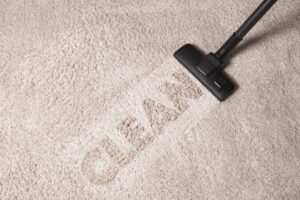
 Tips for Identifying and Avoiding Moldy Foods
Tips for Identifying and Avoiding Moldy Foods